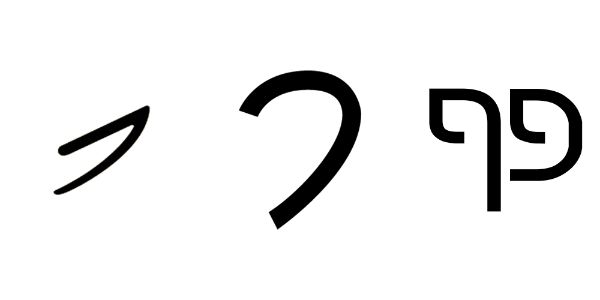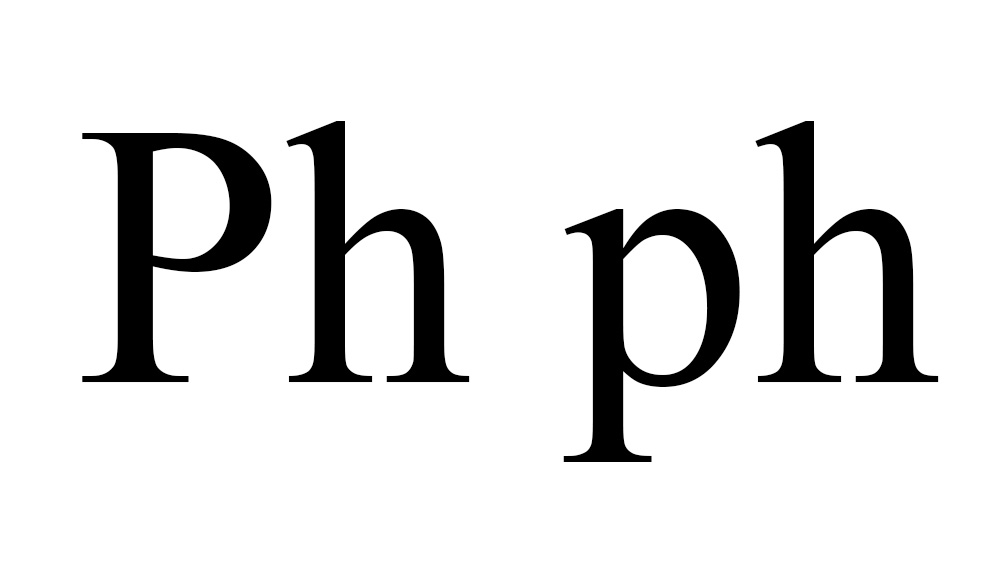Acceptable ways to write it: phaah (phah), paah (pah)
The letter phaah (𐤐) or Ph/ph (p͆) is the seventeenth letter in the Afroasiatic language known as Paleo-Hebrew (Ābarayat). The letter has been equated with the letter Ph, the letter P, and the letter F in the English language. Nonetheless, the letter Ph is the more accurate letter but was more than likely pronounced similarly to the modern letter F in the English language since the letter Ph is pronounced that way in English translations.
The Paleo-Hebrew language or the original language of the Ābarayam is one spoken with an emphasis on the rauakh (breath, wind, spirit). With the language of the Ābarayam, each letter has a meaning and a number associated with it that adds meaning to each word they’re used with. Below you will be able to learn more about the letter in Ancient Hebrew, Yiddish Hebrew, Greek, and much more.
Letter Meanings
| Letter | Meaning |
|---|---|
| 𐤐 (ph) – pha | mouth, word, speak, edge, sword, scatter, blow |
| Prefix | Not applicable |
| Suffix | Not applicable |
| Number | 80 |
Based on the meaning of the letters the word could be defined as:
- “mouth of…”
- “word of…”
- “speak of…”
- “speak a…”
- “sword of…”
- “scattering of…”
Definitions for 𐤐 / ph
| Language | Word | Transliteration | Pronunciation | Definition |
|---|---|---|---|---|
| Ābarayat | 𐤐 | ph | fa | mouth, word, speak, edge, sword, scatter, blow |
| English | Ph ph | ph | /f/ | the combination of the letters p and h in the modern English alphabet. |
| Hebrew | פ ף | p | /p/ | mouth |
| Arabic | ف | f | /f/ | inside, breath, insert |
| Greek | Π π / Φ φ / ϖ | p / ph | [p] / [f] | pi: the sixteenth letter of the Greek alpha-beta |
Images for 𐤐 / ph


History of Meaning
The pictograph of the word phaah (𐤐) is of the mouth and represents something that is open. There is no English word that is derived from this letter but can represent a “pit” as it is an open hole. It could also be a side view of a head with the mouth open, or opening, or to speak, or a river’s beginning, as in headwaters. The phaah (𐤐) pictograph has the meanings of “speak” and “blow” from the functions of the mouth. This letter also means “edge” as the lips are at the edge of the mouth.
History of the Letter P or p͆
The visual appearance of the letter P was introduced in 3800 BCE (125 AM). An inverted “V”-shape appears in early Semitic language 3,800 years ago, sounding like “pe” and meaning “mouth.” The Phoenicians adapted it to a diagonal hook shape at the top. The Romans closed the loop, and flipped it right, by 200 BC.
A rounded form occurred in the early Greek inscriptions from the island of Thera. In the Italic alphabets, the form varied strangely. The standard rounded form in the Latin alphabet was evidently borrowed from the Etruscan, but the colonial Latin alphabet of the 3rd century BCE also shows an angular form resembling the Chalcidic. The Umbrian alphabet had a two-stroke form that recalled the ancient Semitic, and Faliscan had a rounded form that resembled a modern P flipped right-to-left. Oscan lengthened the second small vertical stroke found in the Umbrian form, and the result was similar to the Greek Π.
History of the Letter F
The visual appearance of the letter F was introduced in 400 CE (4325 AM). The “F” of Phoenician times resembled a “Y” and sounded like “waw.” The ancient Greeks changed it to “digamma” and tipped the “Y” over to look like a drunk version of our “F.” The Romans regulated the writing of the letter centuries later, drawing the cross lines at firm geometric right angles, also giving it the “fff” sound.
F, letter that corresponds to the sixth letter of the Greek, Etruscan, and Latin alphabets, known to the Greeks as digamma. None of the various Greek forms occur in the Shamay (𐤔𐤌𐤉) alphabets. Its origin in the Greek alphabet has been a matter of dispute, some maintaining that it descends from Shamay (𐤔𐤌𐤉) uau (𐤅) and others, maintaining that it was merely differentiated from the preceding letter E by the omission of a horizontal stroke.
In either case it is probable that the Greeks were not the innovators, since a form of the letter occurs in the Lydian alphabet. The letter was probably contained in an Asian alphabet from which the Greek, Lydian, and Etruscan were derived.
In the Faliscan alphabet, the letter had a curious form resembling an arrow pointing up. The Latin cursive of the 5th century CE employed a lengthened form, and the letter was generally extended below the line in uncial writing. In Irish writing of the 7th century, the form came to resemble the modern f, and the Carolingian added further rounding of the top. From this developed the modern minuscule f.
Definitions for 𐤐𐤉 / phay
When adding the 𐤉 (yad) to the end of a word, it creates a possessive of the original word. It can either signify “my…” or identify a member of a nation. For example, 𐤏𐤁𐤓 (Ābar) is the progenitor, but 𐤏𐤁𐤓𐤉 (Ābaray) is the singular descendant of him also known as a Hebrew.
| Language | Word | Transliteration | Pronunciation | Definition |
|---|---|---|---|---|
| Ābarayat | 𐤐𐤉 | phay | fey | |
| English | ||||
| Hebrew | ||||
| Arabic | ||||
| Greek |
Images for 𐤐𐤉 / phay


Definitions for 𐤐𐤉𐤌 / phayam
When adding the 𐤌 (mayam) after the 𐤉 (yad) to the end of a word, it creates a plural of the original word. It can identify multiple members of a nation. For example, 𐤏𐤁𐤓 (Ābar) is the progenitor, but 𐤏𐤁𐤓𐤉𐤌 (Ābarayam) are the plural descendants of him also known as Hebrews.
| Language | Word | Transliteration | Pronunciation | Definition |
|---|---|---|---|---|
| Ābarayat | 𐤐𐤉𐤌 | phayam | faw-yawm | |
| English | ||||
| Hebrew | ||||
| Arabic | ||||
| Greek |
Images for 𐤐𐤉𐤌 / phayam


Definitions for 𐤐𐤉𐤕 / fayat
When adding the 𐤕 (tau) after the 𐤉 (yad) to the end of a word, it creates a plural of the original word. It identifies the language or a sign of a nation’s existence. For example, 𐤏𐤁𐤓 (Ābar) is the progenitor, but 𐤏𐤁𐤓𐤉𐤕 (Ābarayat) is the language of him also known as Paleo-Hebrew language.
| Language | Word | Transliteration | Pronunciation | Definition |
|---|---|---|---|---|
| Ābarayat | 𐤐𐤉𐤕 | fayat | faw-yawt | |
| English | ||||
| Hebrew | ||||
| Arabic | ||||
| Greek |
Images for 𐤐𐤉𐤕 / fayat


Classification
You can continue your studies of the words by viewing Strong’s entries for:



